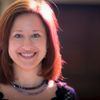Written with A. Crosser
Journalists have had a field day throughout the course of 2016. With the legendary election happening in the United States, Britain leaving the European Union, and the general celebrity news which floods our magazines and newspapers, it's no surprise many of us didn't hear about trailblazer Trudy Dickinson's recent passing or any of the numerous strides women made in STEM fields this year.
When you browse Facebook, do your networks post news articles about women pioneering new innovations and companies? Do you see many segments about successful women in Science, Tech, Engineering and Math on your mainstream media channels? It's not that women aren't making major waves in STEM fields, the problem is a lack of air coverage and mainstream visibility. The opportunity is to make more of these women household names like Einstein, Steve Jobs, Zuckerberg, Bill Gates, Elon Musk, and Bill Nye. We need to tell HERstory much better. For example, did you know Ada Lovelace developed the first computer and Madame CJ Walker revolutionized the haircare industry for African American women?
Below, we are taking a look at 5 of the biggest stories about women in STEM this year (and if you did hear about 3:5, we send you a big high five!).
#5: Three Women Doctoral Students from Johns Hopkins Named Siebel Scholars
Known for their innovations in disease treatment and surgery, three female students from Johns Hopkins University were accepted into the prestigious Siebel Scholars program. Five students from the university were selected, and three out of the five are women.
The $35,000 grant is awarded to the most promising students from the world's most renowned business and engineering schools. The grant is awarded to help these students further their research and pursue collaborative solutions to problems in science and technology.
The female Siebel Scholars from Johns Hopkins University this year include:
●Adriana Blazeski, doctoral student in biomedical engineering.
●Lindsay Clegg, doctoral student in biomedical engineering.
●Shiva Razavi, doctoral student in biomedical engineering.
#4: Women Make Up 48.5% of Carnegie Mellon's 2016 Computer Science Class
In most Computer Science programs across the United States, about 5 out of 6 enrolled students are male. When Carnegie Mellon released the demographics for its 2016 Computer Science program, it came as quite a surprise to many that nearly half of the class are women.
Four years ago, Carnegie Mellon's Computer Science program was made up of just 34.6% women - less than ideal, but still much higher than many other top universities. In 2016, the number reached 48.5% women - nearly half of Carnegie Mellon's Computer Science students.
In addition, 43.3% of Carnegie's 2016 College of Engineering enrollment are women, another notable stride for girls & women in STEM.
The United States conveys a very prominent gender gap in many of its STEM fields, but the Obama administration is taking major strides to reduce this gap.
In June of 2016, the very first United State of Women Summit took place in Washington, D.C. Michelle Obama and Oprah headlined the event, with appearances by President Obama and Vice President Biden throughout the summit.
The summit's greatest announcement? The United States will sponsor over $50 million in new efforts to encourage women and girls to pursue careers in STEM. In addition, seven foundations have come together to create the Young Women's Initiative, which aims to improve the lives of young women across the United States and encourage them to pursue the education and career of their dreams.
#2: Women Are Twice as Likely Than Men to be Selected For Tenure-Track Jobs in STEM
According to Catalyst.org, women in STEM fields are now twice as likely to be selected for tenure-track jobs in their field than men. In addition, women selected for these positions are offered salaries equal to those of their male counterparts.
Women applying for these positions must be well-qualified, but women with the same qualifications as men are not discriminated against when applying for tenure-track jobs.
#1: Five Exemplary Women Recognized in 2017 L'Oreal-Unesco Women in Science Awards For Major Discoveries
We so often hear about women making it into STEM fields, but we don't always draw attention to their achievements throughout their careers.
The L'Oreal-Unesco Women in Science Awards highlights the achievements of several exemplary women each year. This year, the Awards honored women from Africa, Asia-Pacific, Europe, North America, the Arab States, and Latin America for their accomplishments in physics, chemistry, and engineering.
The women honored during the latest ceremony included:
●Michelle Simmons of Australia, for her contributions to atomic and quantum electronics.
●Maria Teresa Ruiz of Chile, for her discovery of the first brown dwarf star.
●Niveen Khashab of Saudi Arabia, for her newly developed techniques designed to "monitor intracellular antioxidant activity."
●Zhenan Bao of the United States, for her "outstanding contribution to and mastery of the development of novel functional polymers for consumer electronics, energy storage and biomedical applications."
●Nicola Spaldin of Switzerland, for her "groundbreaking multidisciplinary work predicting, describing and creating new materials that have switchable magnetic and ferroelectric properties".
Society continuously downplays HERstory by dismissing the stunning achievements of women in STEM (+entrepreneurship). It's time to showcase these great breakthroughs by recognizing them. By promoting and sharing the stories of successful women in STEM, we can draw global attention to their strides and increase the pipeline of girls and women entering these meaningful fields and careers. We can move from Her-story, to Your-story, and then to Their-stories of innovation, building, and achievement.
